California Highway Patrol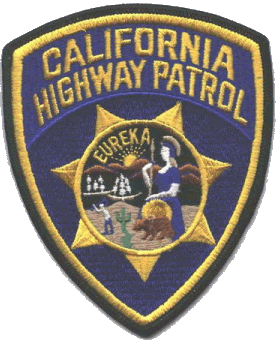
California Highway Patrol
On August 14, 1929, the California Highway Patrol was created. The new law gave Statewide authority to the Highway Patrol to enforce traffic laws on county and State highways — a responsibility which remains in effect today. The primary mission of the California Highway Patrol is "the management and regulation of traffic to achieve safe, lawful, and efficient use of the highway transportation system." As a major statewide law enforcement agency, the secondary mission of the Department is to assist in emergencies exceeding local capabilities.
The CHP also provides disaster and lifesaving assistance. During its first ten years, the Patrol successfully grew into a highly respected, effective traffic safety force of 730 uniformed personnel. After World War II, the legislature decided to consolidate and reorganize the Patrol's enforcement and administrative responsibilities. In October 1947, the Department of the California Highway Patrol was established and the position of commissioner was created to head the new Department.
The span of enforcement responsibility has expanded dramatically and the CHP has continued to grow and change. Today's responsibilities include truck and bus inspections, air operations (both airplanes and helicopters) and vehicle theft investigation and prevention. The 1995 merger with the California State Police also increased the areas of responsibility to include protection of state property and employees, the Governor and other dignitaries. In addition to its enforcement responsibilities, the Department has taken a leadership role in educating the public concerning driver safety issues.
The CHP has received state and national recognition for its innovative public awareness campaigns promoting use of safety belts, a Designated Driver when drinking, securing small children in safety seats and wearing motorcycle and bicycle helmets.
Prior to the formation of the California Highway Patrol in 1929, state traffic law enforcement was handled by Inspectors of the California Motor Vehicle Department. From 1917 to 1921, these patrol officers were assigned the task of enforcing highway traffic conduct and equipment laws in the Golden State. A snag occurred with a 1923 court ruling which decreed that county traffic officers could not enforce state traffic laws. This necessitated state-appointed traffic officers for each county in California, but supervised by DMV Inspectors and Deputy Inspectors who were not restricted by county lines.
There is no clear photographic evidence or written record that clarifies what type of plates the California Motor Vehicle Department Inspectors ran on their cars at the time. There is, however a 1923 promotional photo for a wheel-siren company that shows a "bathing beauty" wearing a California MVD Inspector's hat, badge and riding gloves standing next to a patrol motorcycle bearing a 1923 state exempt (Diamond E) motorcycle license plate # 39. Therefore it can be surmised that MVD Inspectors ran California State Exempt license plates on their patrol cars as well at that time.
California has perhaps had the longest and most consistent formatting of such state vehicle identifiers anywhere in the U.S. as the "Diamond E" plates were run for over 80 years on state vehicles including those of the California Highway Patrol from 1916 until 1997.
These plates emulated the color and format of regular state passenger license plates of the given years. They have also been consistently run front-and-rear since the beginning.
The earliest versions were porcelain enameled steel plates measuring 4.5" x 13". The colors were blue characters over a white background. Four mounting holes were provided lined with brass grommets to prevent chipping of the porcelain when fastened to the vehicle. A year tab was affixed above the abbreviation CAL along the left margin of the plate, followed by the <E>and a number up to 4 digits. The years for the plates from 1916 to 1919 were validated by tab attachments with the corresponding registration number engraved upon the device made of the following designs/ material:
1916: Walking bear profile made of lead (# <E> 316, 635 and 2768 confirmed for 1916)
1917: A yellow painted embossed lead poppy
1918: A green painted embossed lead mission bell
1919: A red painted metal embossed star
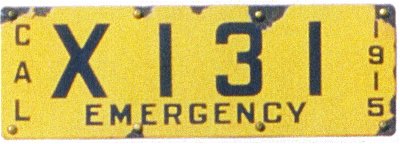 1915 EMERGENCY issue-
1915 EMERGENCY issue- 
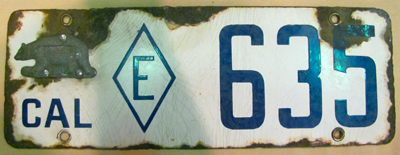 1916 issue- Porcelain enamel over steel.
1916 issue- Porcelain enamel over steel. 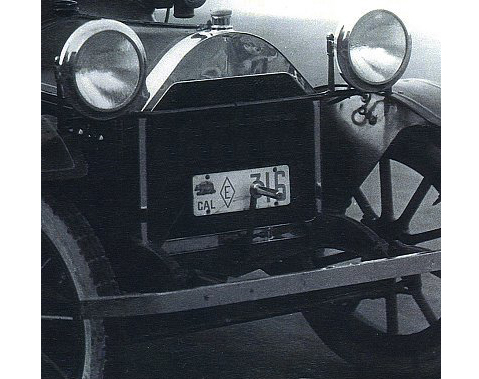
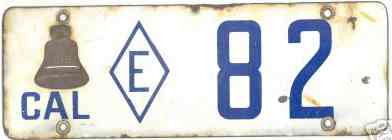 1918 issue- Porcelain enamel over steel.
1918 issue- Porcelain enamel over steel. 
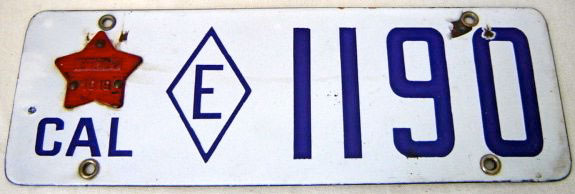 1919 issue- Porcelain enamel over steel.
1919 issue- Porcelain enamel over steel. 
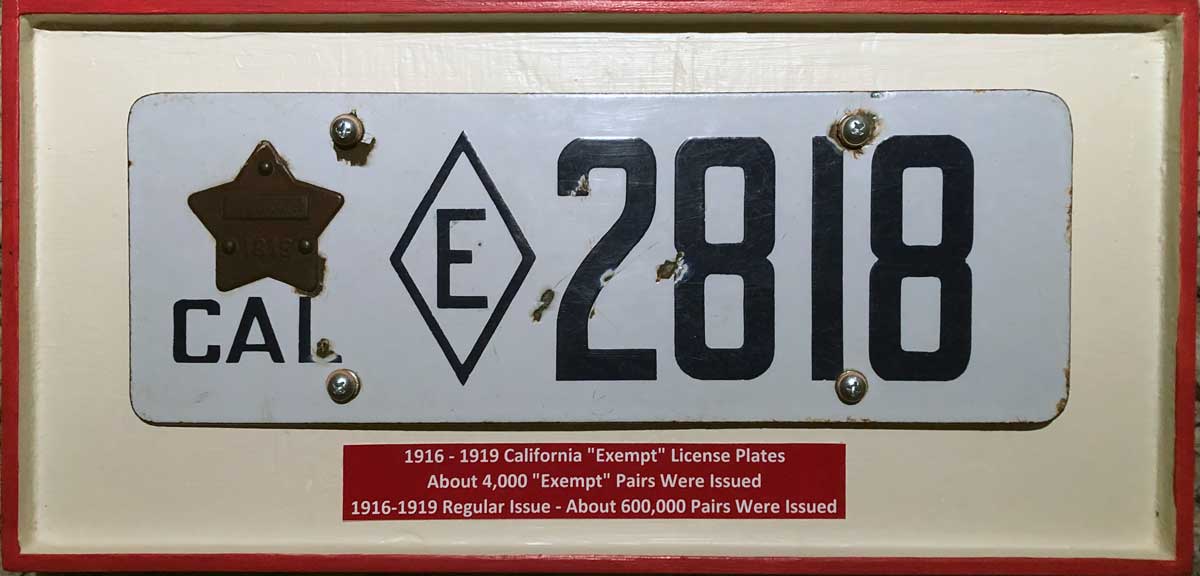 Beautiful California Diamond E with 1919 tab.
Beautiful California Diamond E with 1919 tab. 1920 issue- Embossed steel.
1920 issue- Embossed steel. 
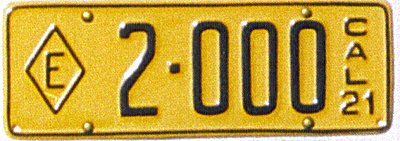 1921 issue- Embossed steel.
1921 issue- Embossed steel. 
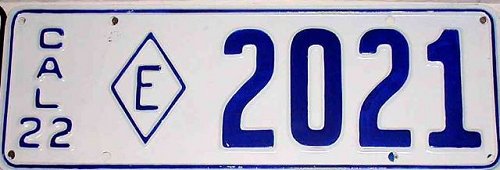 1922 issue- Embossed steel.
1922 issue- Embossed steel. 
 1923 issue- Embossed steel.
1923 issue- Embossed steel.
 1924 issue- Embossed steel.
1924 issue- Embossed steel.
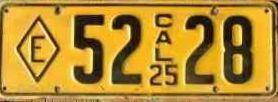 1925 issue- Embossed steel.
1925 issue- Embossed steel. 
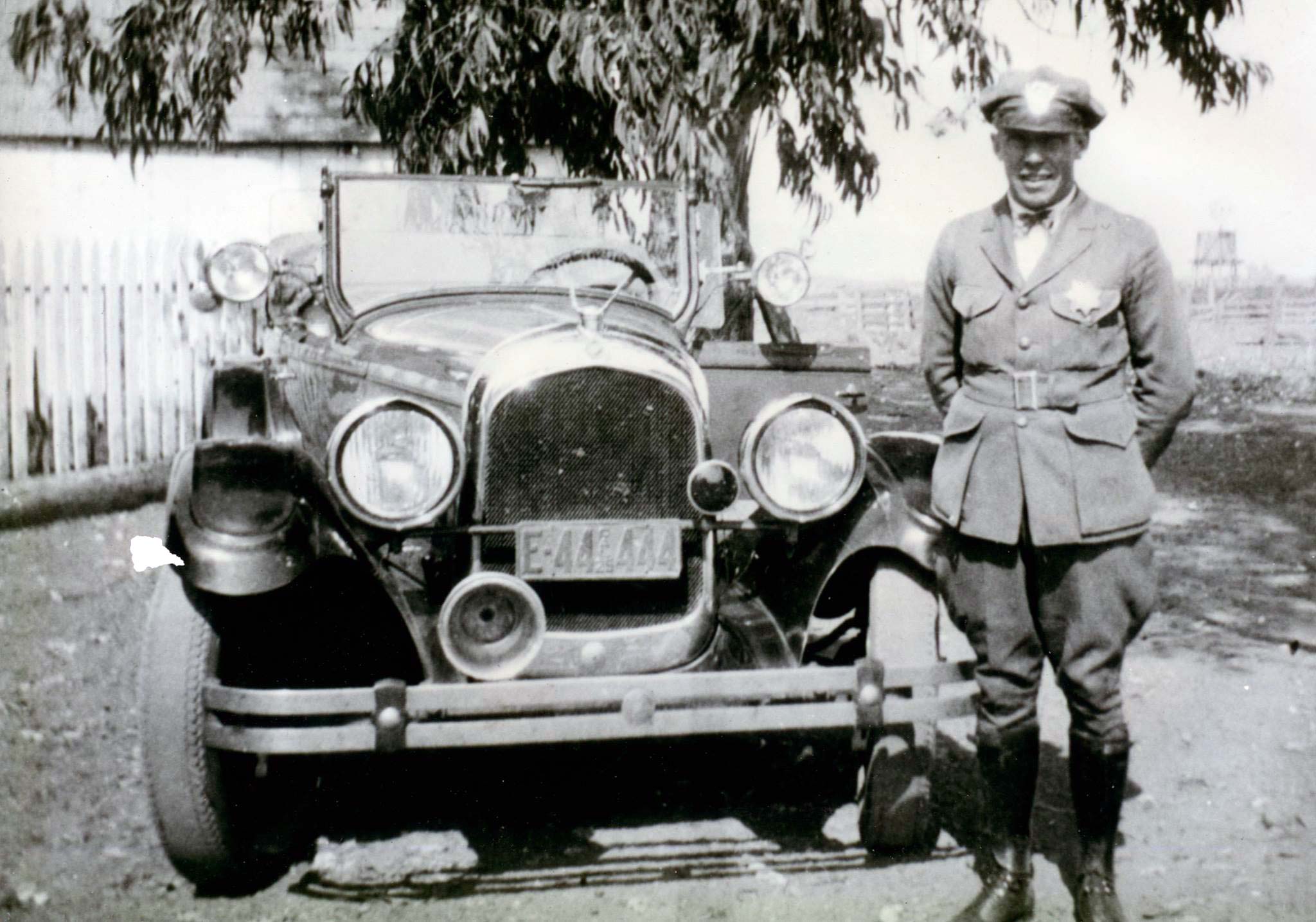 1925 issue with large E prefix in lieu of diamond.
1925 issue with large E prefix in lieu of diamond.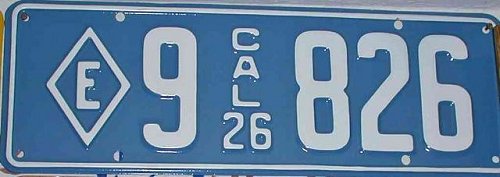 1926 issue- Embossed steel.
1926 issue- Embossed steel. 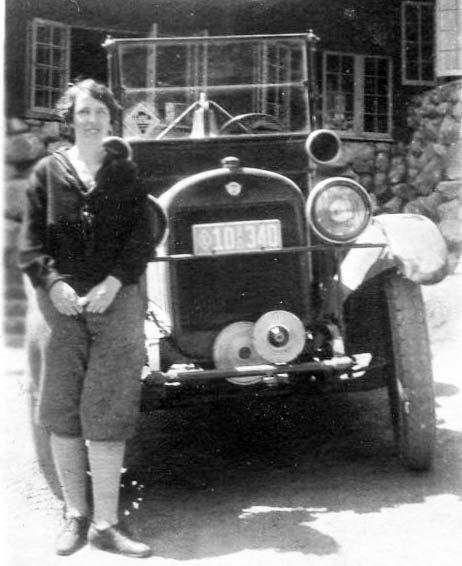 (Courtesy Darryl Lindsay)
(Courtesy Darryl Lindsay) 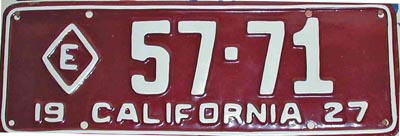 1927 issue- Embossed steel.
1927 issue- Embossed steel.
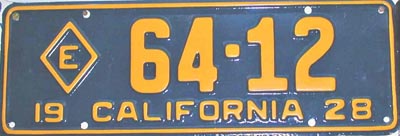 1928 issue- Embossed steel.
1928 issue- Embossed steel. 
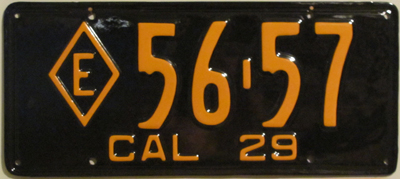 1929 issue- Embossed steel.
1929 issue- Embossed steel. 
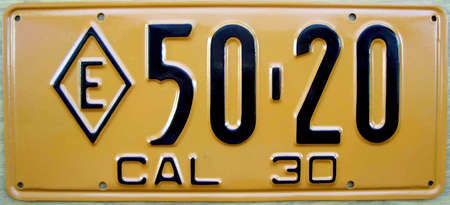 1930 issue- Embossed steel.
1930 issue- Embossed steel. 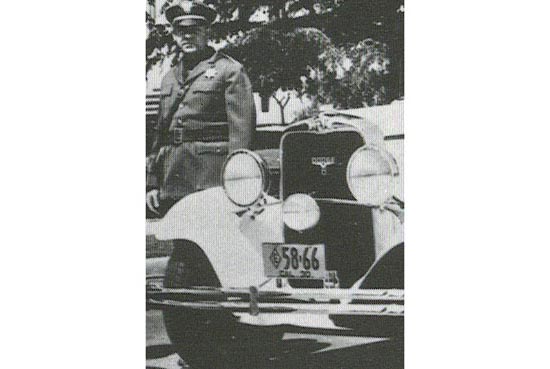 1930 CHP Dodge
1930 CHP Dodge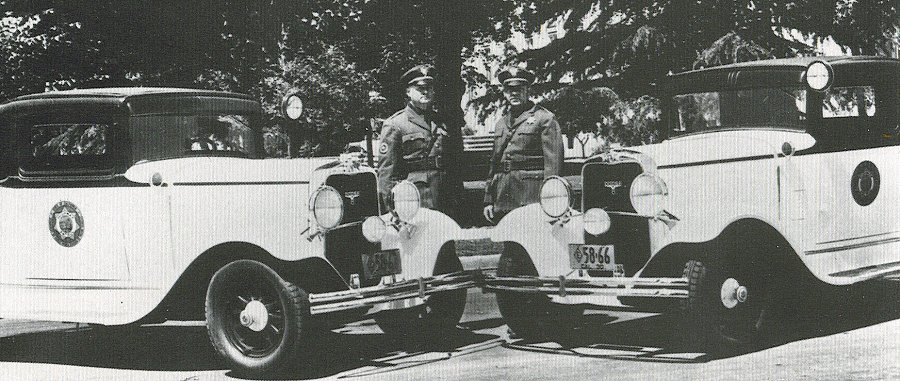
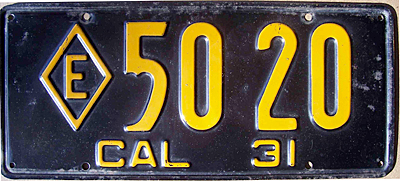 1931 issue- Embossed steel.
1931 issue- Embossed steel. 
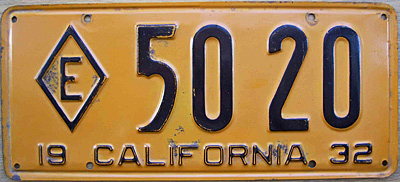 1932 issue- Embossed steel.
1932 issue- Embossed steel. 
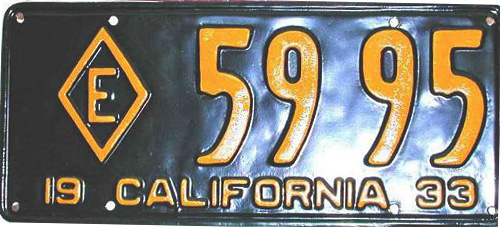 1933 issue- Embossed steel.
1933 issue- Embossed steel.
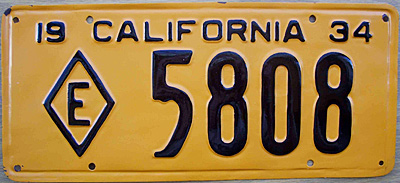 1934 issue- Embossed steel.
1934 issue- Embossed steel. 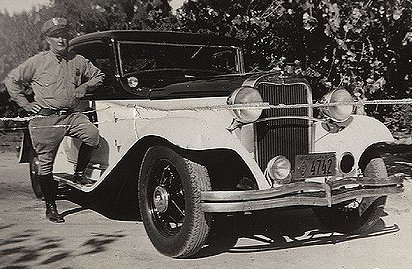
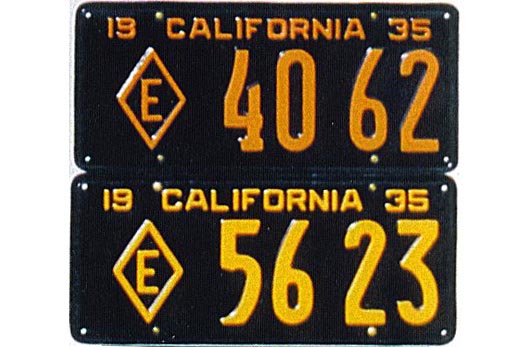 Same format as 1934 issue showing both orange characters and yellow as were used in 1935.
Same format as 1934 issue showing both orange characters and yellow as were used in 1935.
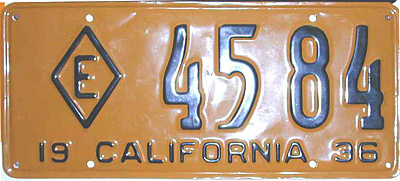 1936 issue- Embossed steel.
1936 issue- Embossed steel. 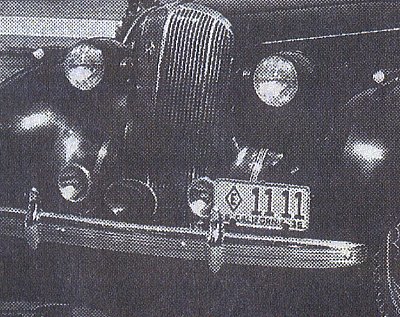
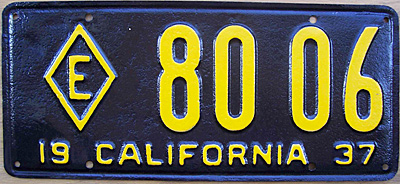 1937 issue- Embossed steel.
1937 issue- Embossed steel. 
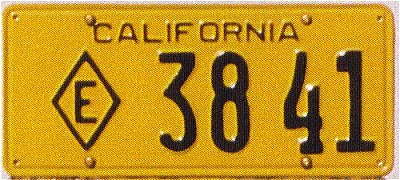 1938-1940 issue- Embossed steel. Approx. 6 1/8" x 14".
1938-1940 issue- Embossed steel. Approx. 6 1/8" x 14". 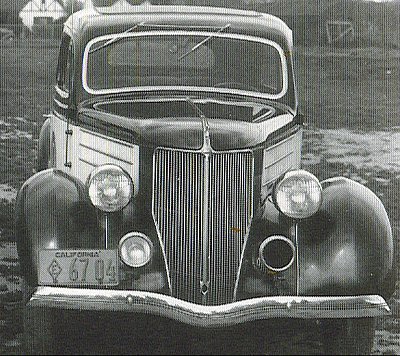
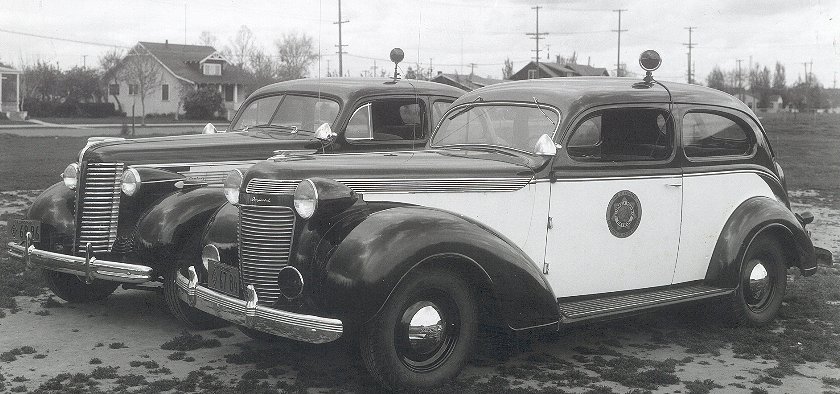
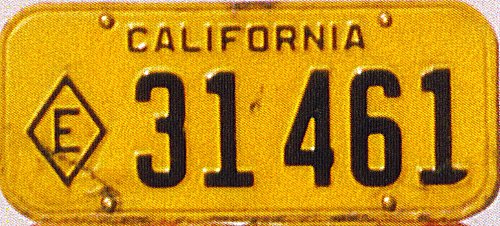 1940-1946 issue- Embossed steel and embossed aluminum.
1940-1946 issue- Embossed steel and embossed aluminum. 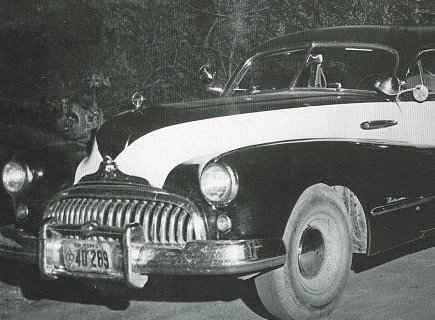
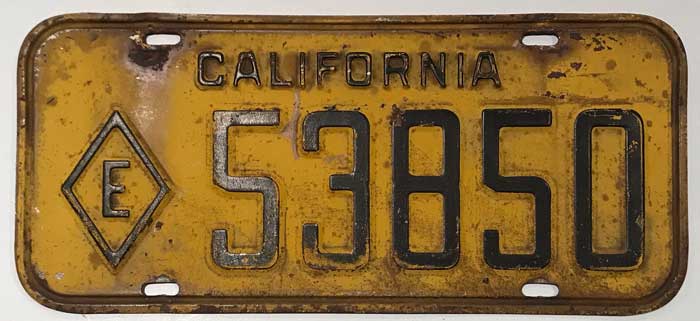 1942 issue- Embossed steel.
1942 issue- Embossed steel. 
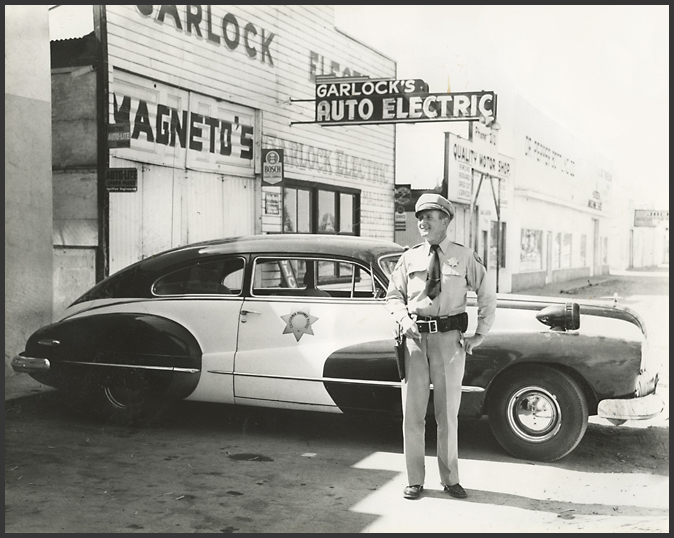
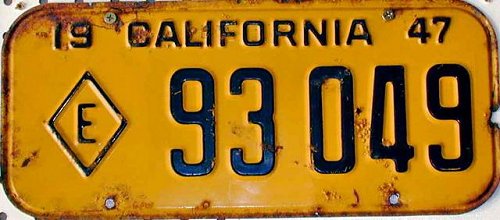 1947 issue- Embossed steel.
1947 issue- Embossed steel. 
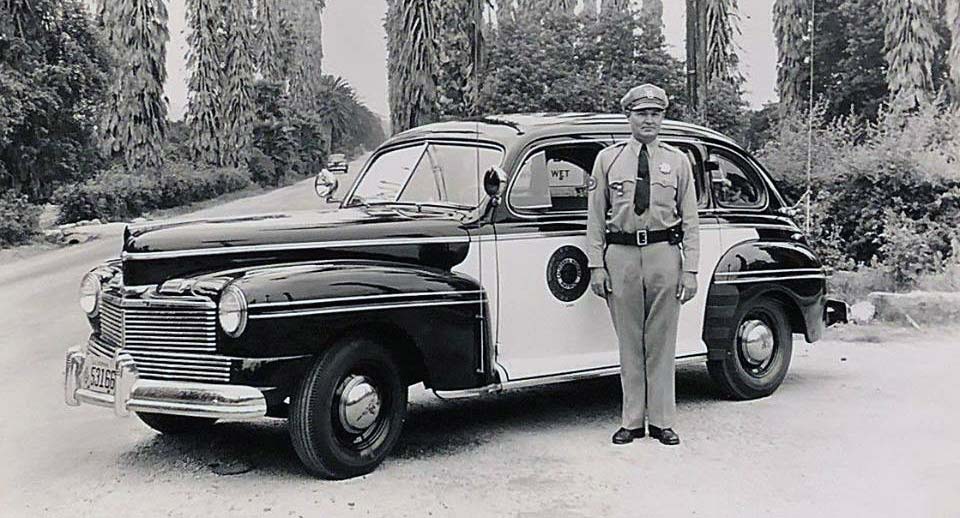 1948.
1948. 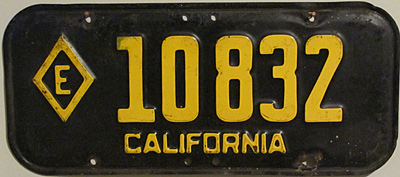 1951-1956 issue- Embossed steel and embossed aluminum.
1951-1956 issue- Embossed steel and embossed aluminum. 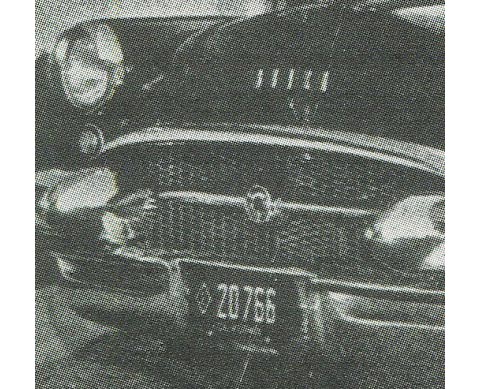
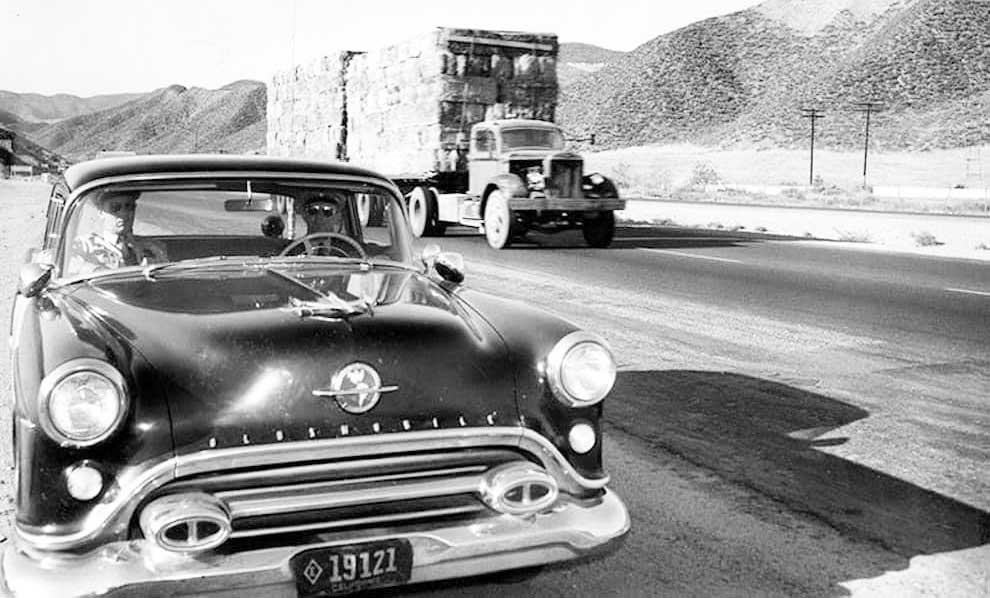
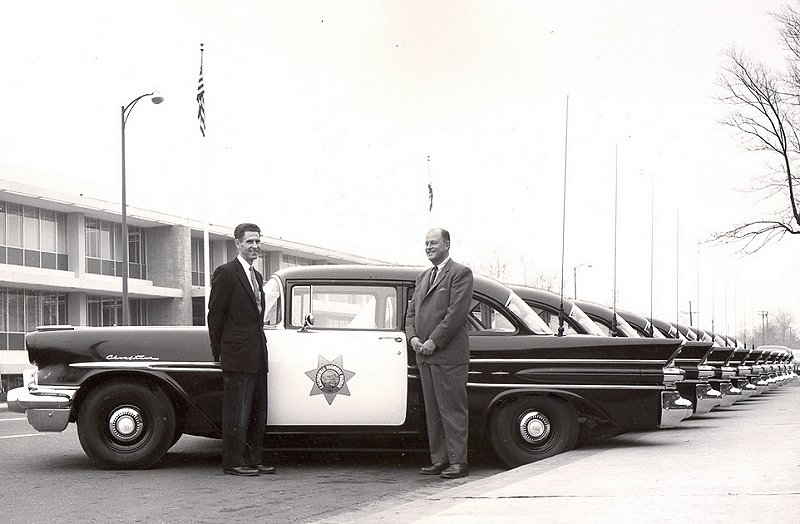
1956 saw the experimentation of a new technology in the state to make license plates more visible in low-light conditions. Crushed glass bead material was added to the surface paint of the galvanized steel license plates and used to test the reflective properties of the background of the plate as a measure for added traffic safety. CHP patrol vehicles were chosen for this experiment as these vehicles had the most continuous exposure to the elements and other wear-and-tear than any other state vehicle in the fleet.
The experiment must not have been too successful as California did not opt for reflective license plates until 26 years later!
Later versions of the 1956-1963 plate used flat painted backgrounds and were made of aluminum with a registration number using six numbers.
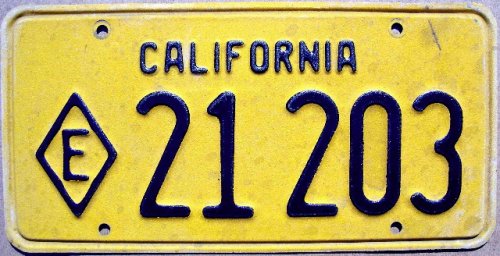 1956-1963 issue-
1956-1963 issue-
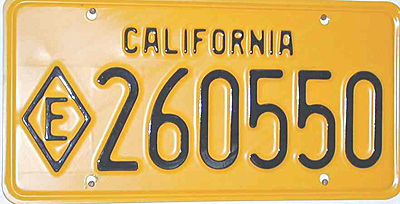 1956-1963 issue-Embossed galvanized steel and embossed aluminum.
1956-1963 issue-Embossed galvanized steel and embossed aluminum. 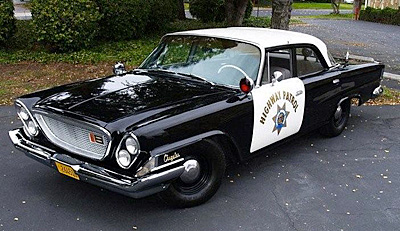 1962 CHP Chrysler
1962 CHP Chrysler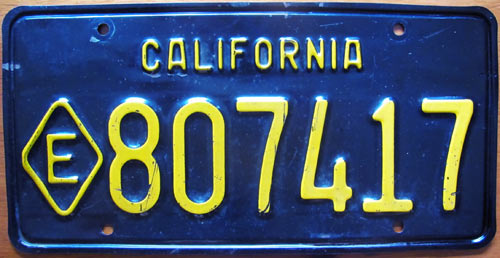 1963-1969 issue-Embossed steel. Chrome yellow over black.
1963-1969 issue-Embossed steel. Chrome yellow over black. 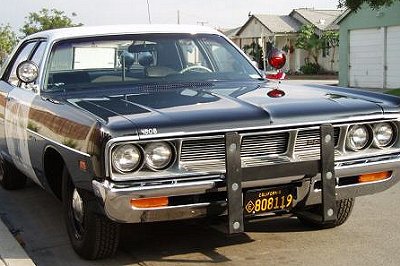
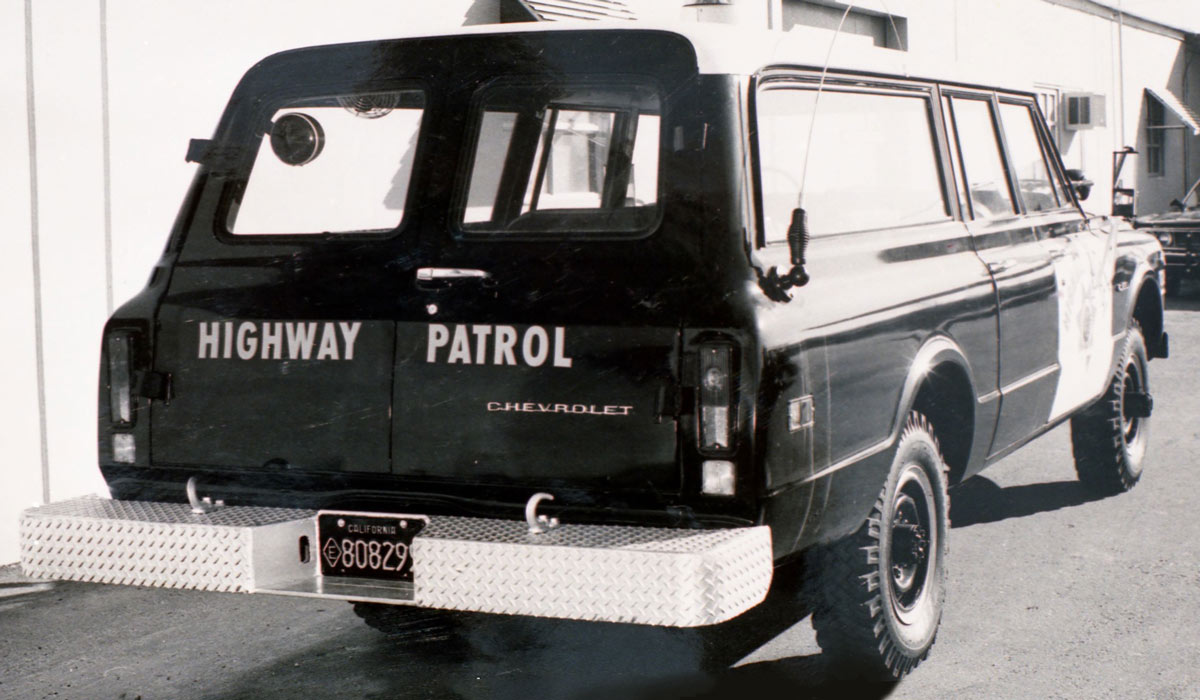 (Courtesy Darryl Lindsay)
(Courtesy Darryl Lindsay)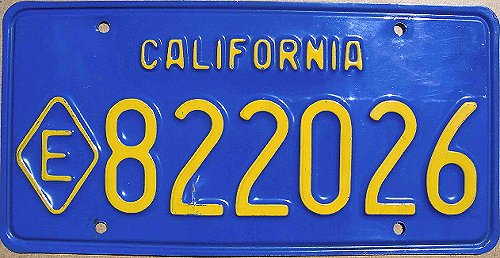 1969-1982 issue-Embossed steel. Chrome yellow over blue. Steel phased-out for aluminum around 1975
1969-1982 issue-Embossed steel. Chrome yellow over blue. Steel phased-out for aluminum around 1975
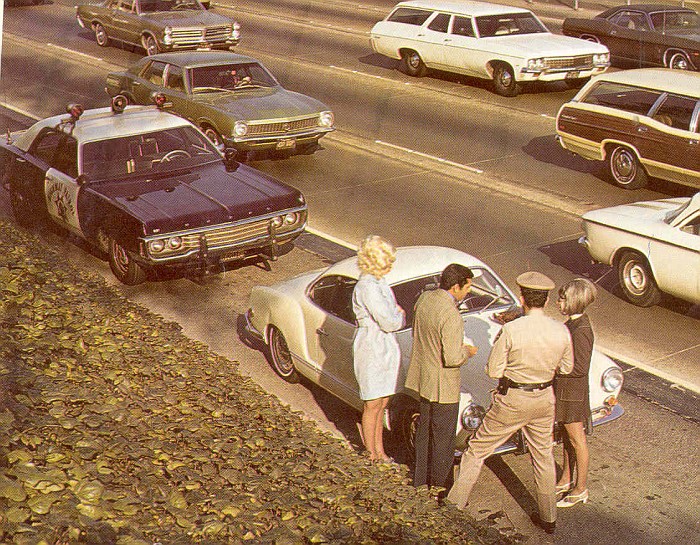
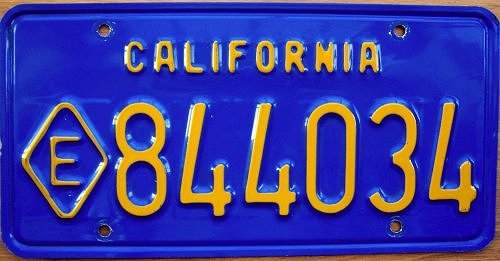 1975-1982 issue-Embossed aluminum.
1975-1982 issue-Embossed aluminum. 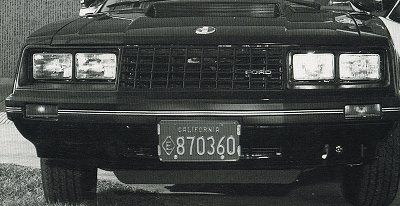
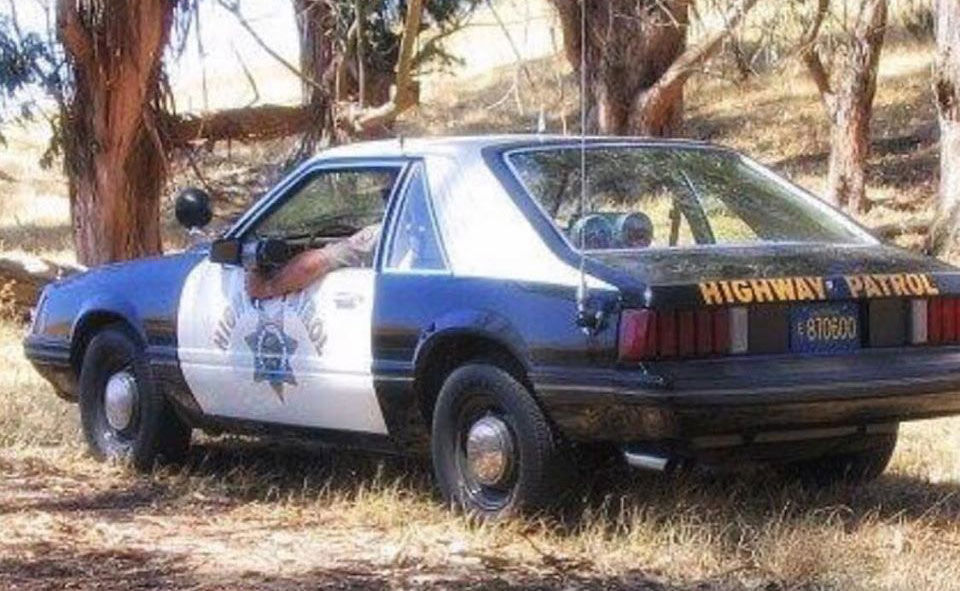
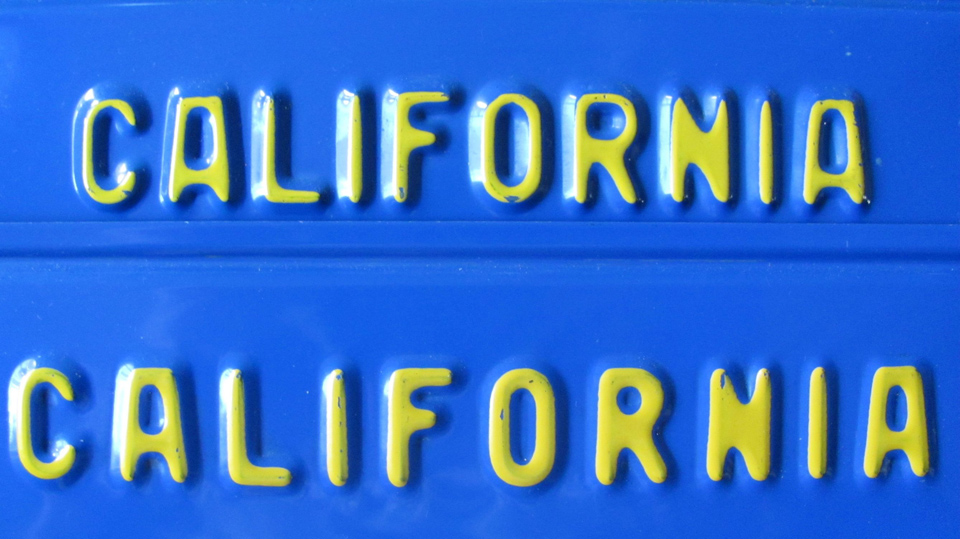
This is how to visually differentiate between the older steel version and the later aluminum version of the 1969-1982 "blue plates". The steel version has a much "tighter" state name while the aluminum version is more spread-out.
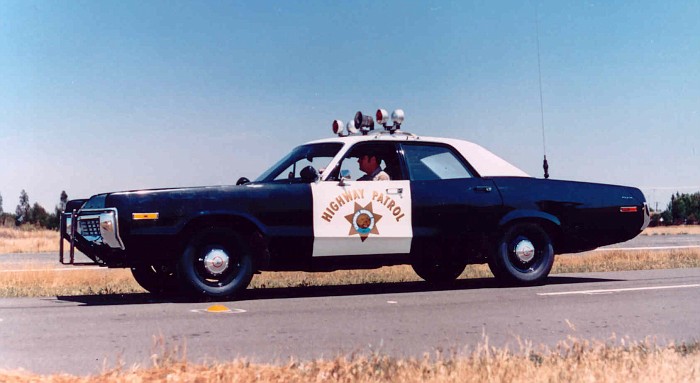
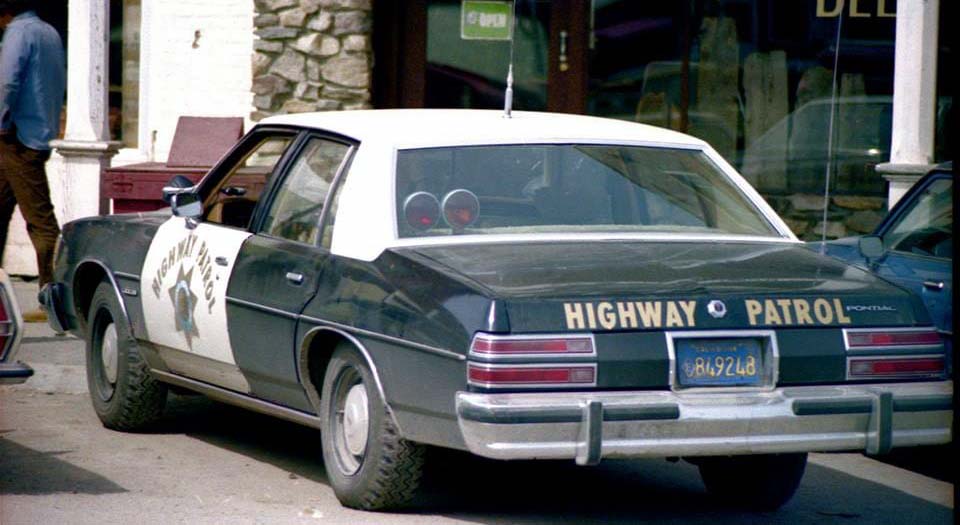 (Courtesy Mac Horst)
(Courtesy Mac Horst) 1978.
1978. 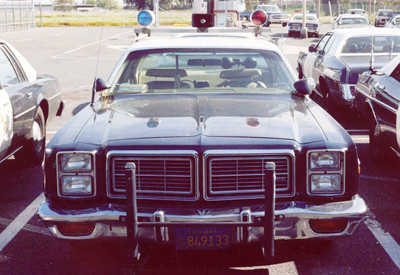 1978 CHP Dodge. Plate # 849133
1978 CHP Dodge. Plate # 849133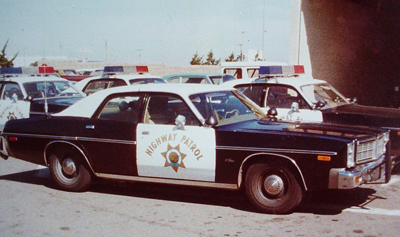 1978 CHP Dodge Slicktop
1978 CHP Dodge Slicktop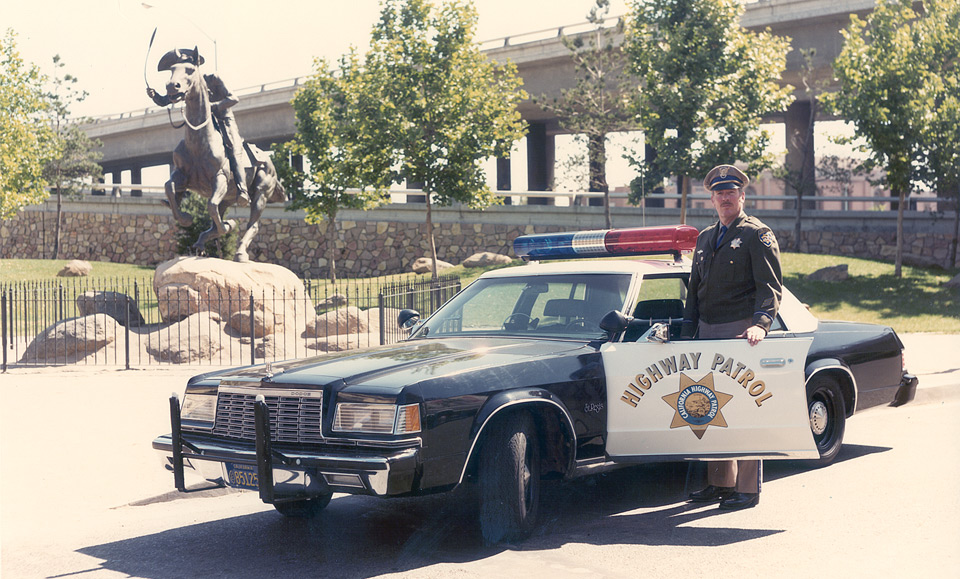
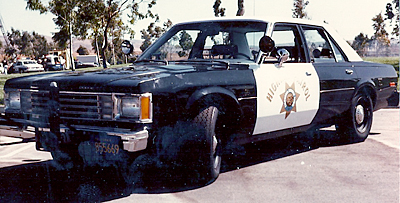 1980 CHP Dodge Aspen
1980 CHP Dodge Aspen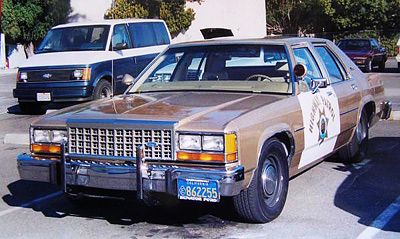 Late 1980's CHP Ford (Commercial Vehicle Enforcement) still using older blue plate.
Late 1980's CHP Ford (Commercial Vehicle Enforcement) still using older blue plate.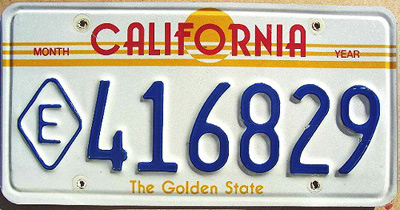 1982-1987 issue- Embossed aluminum. Dark blue numerals over reflective white, with red and yellow silk-screen.
1982-1987 issue- Embossed aluminum. Dark blue numerals over reflective white, with red and yellow silk-screen.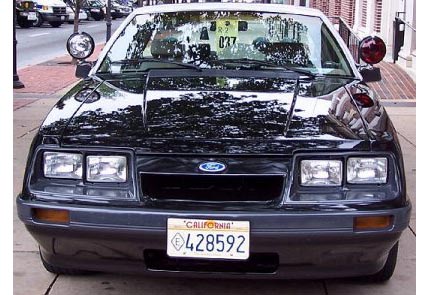 SSP Mustang
SSP Mustang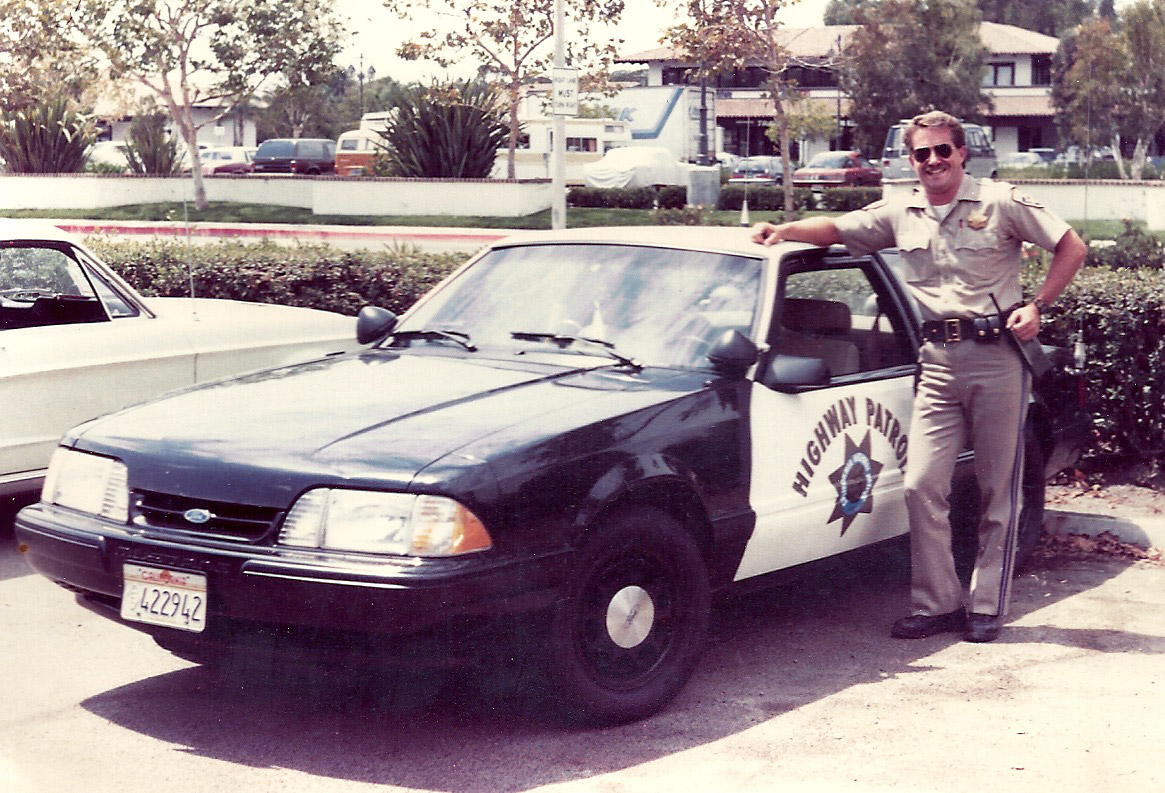
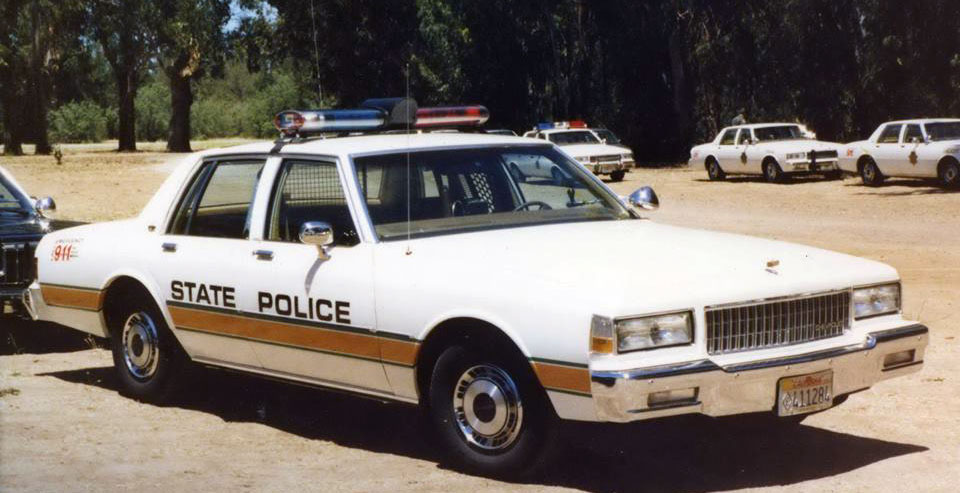 Diamond E state exempt license plates were also used on the vehicles of the now-defunct California State Police.
Diamond E state exempt license plates were also used on the vehicles of the now-defunct California State Police. 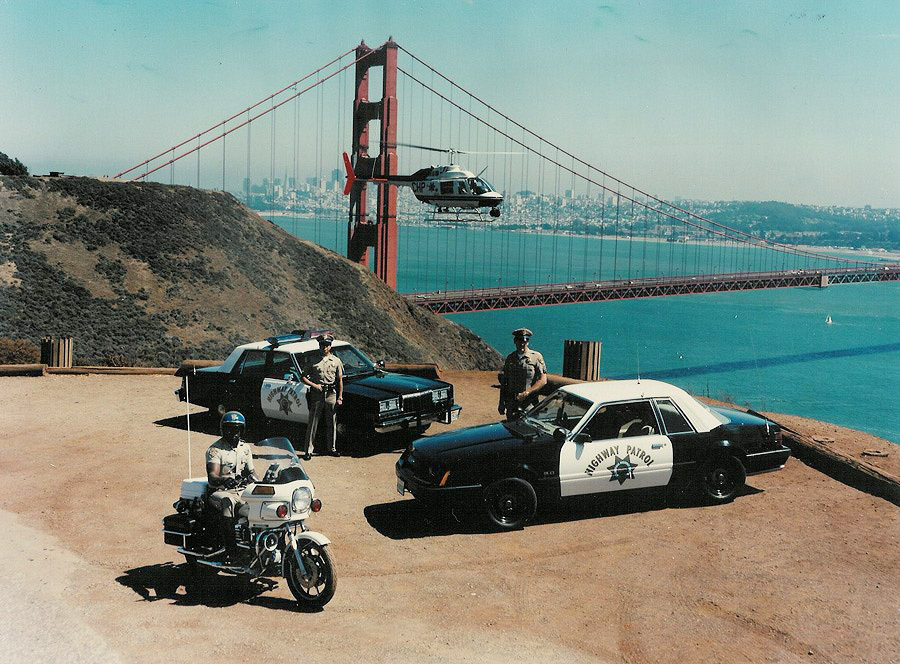
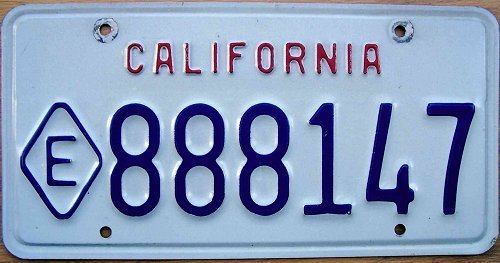 1987-1994 issue-Embossed aluminum.
1987-1994 issue-Embossed aluminum. 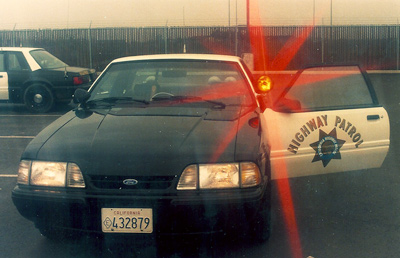 SSP Mustang
SSP Mustang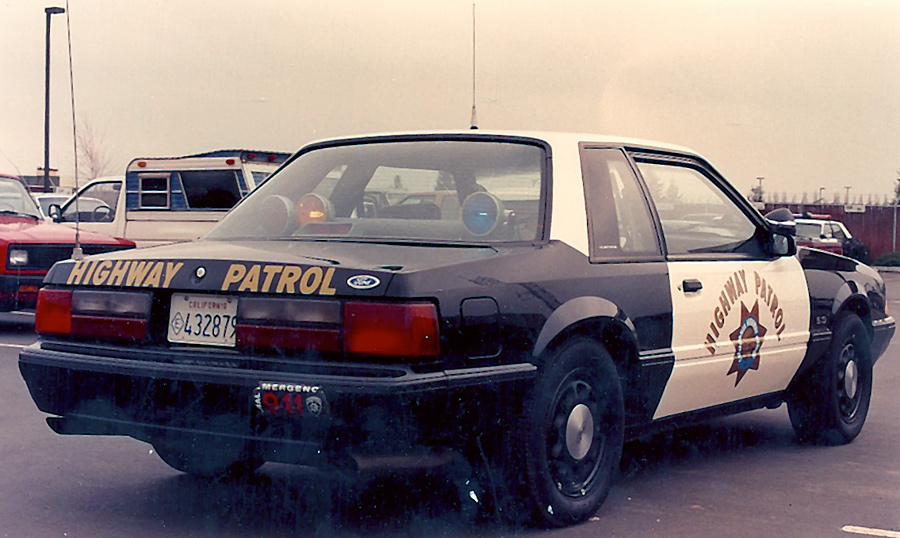
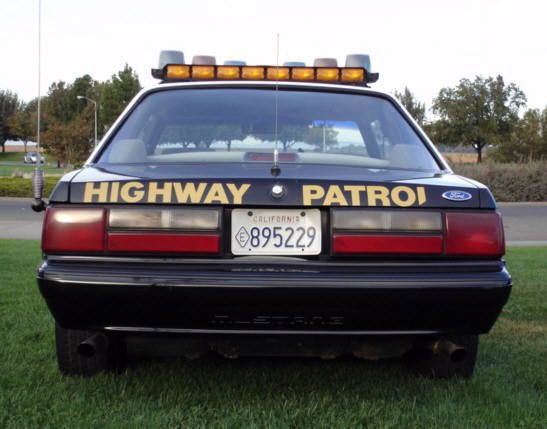
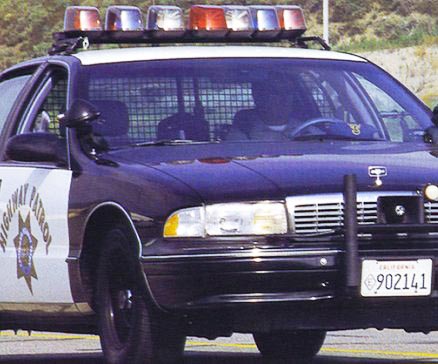
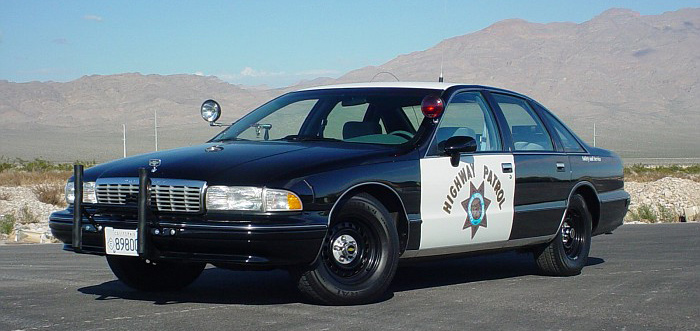
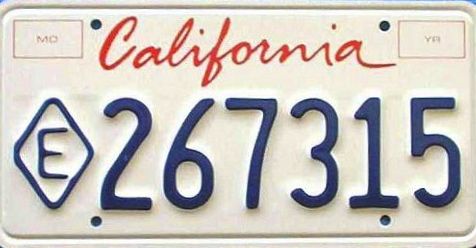 1994-1997 issue- Embossed aluminum.
1994-1997 issue- Embossed aluminum. 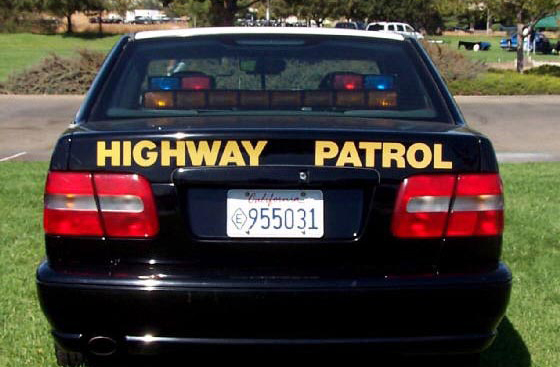 Slicktop CHP Volvo!
Slicktop CHP Volvo!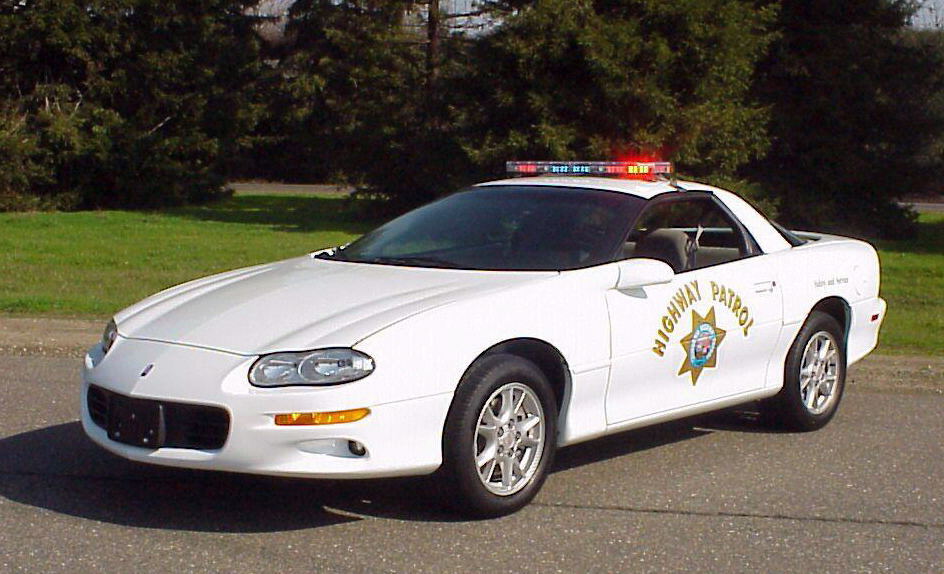
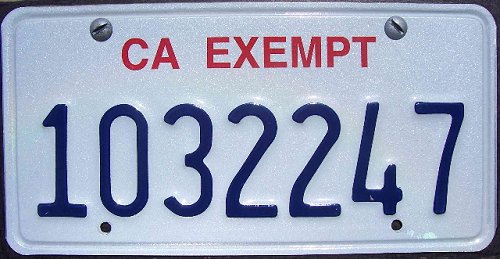 1997-Current issue. With CA EXEMPT silkscreened in red. When the California diamond E plates ran-up to number 999999, the state dropped the diamond E motif to allow for a seven digit number, thus breaking an 82 year old tradition.
1997-Current issue. With CA EXEMPT silkscreened in red. When the California diamond E plates ran-up to number 999999, the state dropped the diamond E motif to allow for a seven digit number, thus breaking an 82 year old tradition.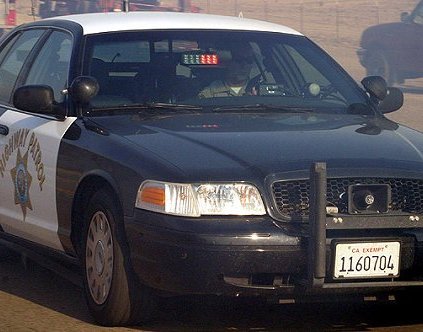
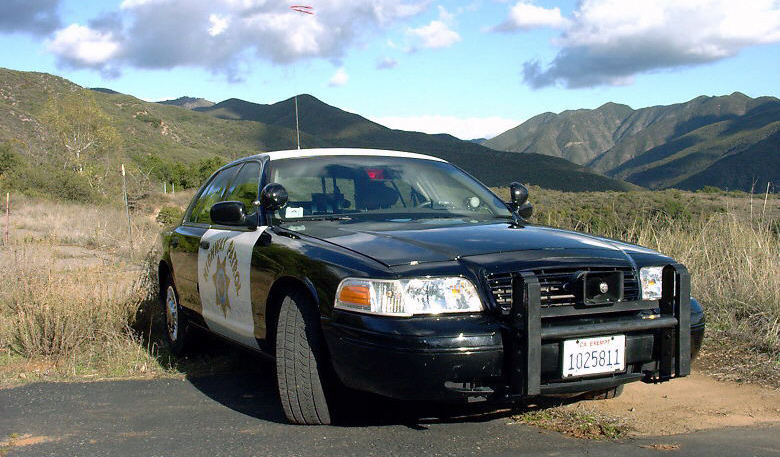
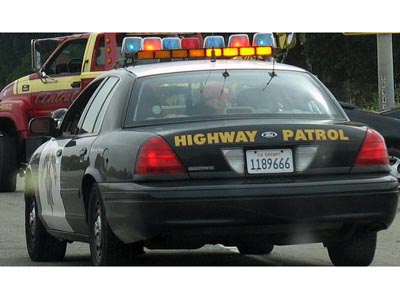
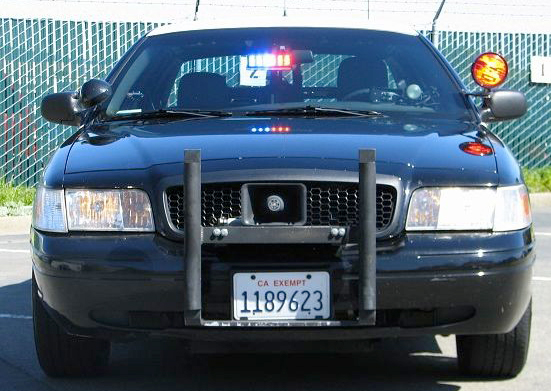
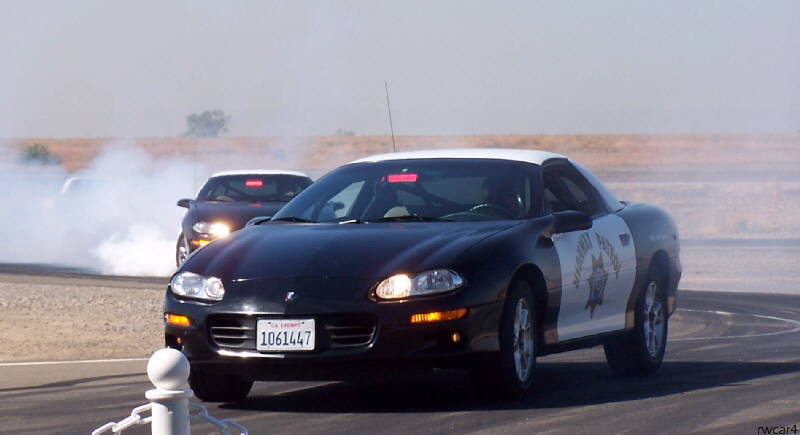
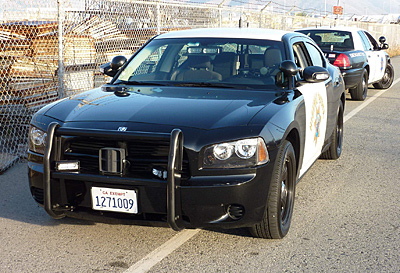 Marked CHP Slicktop Dodge Charger
Marked CHP Slicktop Dodge Charger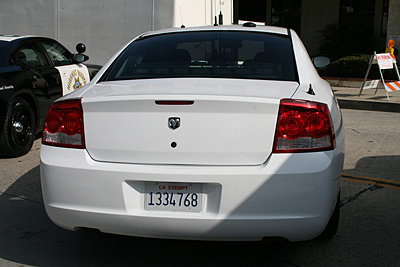 Unmarked CHP Slicktop Dodge Charger
Unmarked CHP Slicktop Dodge Charger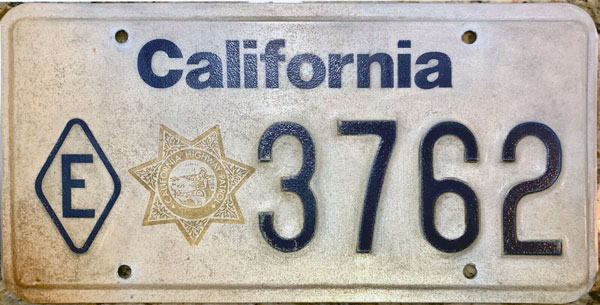 Circa 1990's 3M prototype for a silkscreened graphic California Highway Patrol license plate. CHP badge emblem silkscreened in gold, state name and Diamond E silkscreened in dark blue.
Circa 1990's 3M prototype for a silkscreened graphic California Highway Patrol license plate. CHP badge emblem silkscreened in gold, state name and Diamond E silkscreened in dark blue.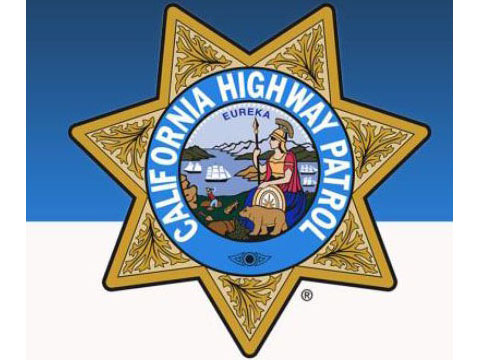
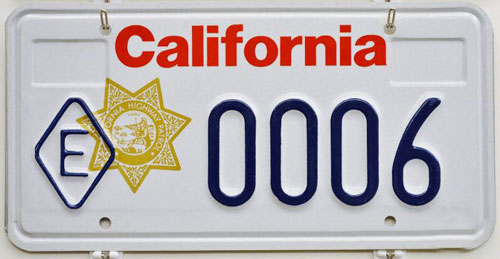 Circa 1992 prototype for a silkscreened graphic California Highway Patrol license plate. CHP badge emblem silkscreened in gold, state name in red.
Circa 1992 prototype for a silkscreened graphic California Highway Patrol license plate. CHP badge emblem silkscreened in gold, state name in red.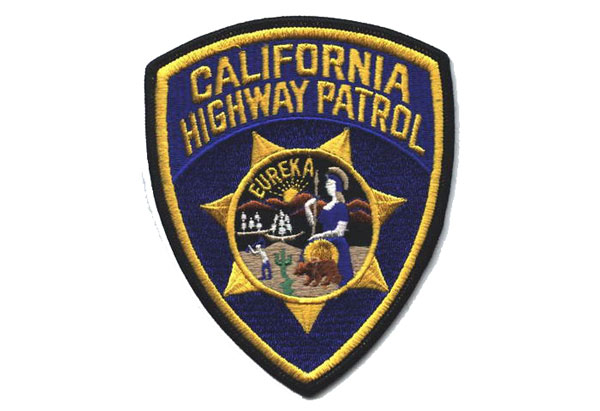
As with the "car sized" plates of the California Highway Patrol, motorcycle plates of the CHP were based on the same color and formatting as regular motorcycle license plates issued by the state with the exception of the <E> prefix for a state exempt motor vehicle. Again, if we are to surmise that California DMV Inspectors, the "pre-CHP" officers used state exempt plates on their motorcycles since the beginning, the following specimen types would have been used:
The earliest versions were porcelain enamelled steel plates measuring 3" x 10" and in a curved or concave format to fit over the rear fender of the motorcycle. Two mounting holes were provided with one at the top and one at the bottom of the plate. CAL was inscribed horizontally across the top of the plate over the <E> followed by a number and over two more numbers. The years for the plates from 1916 to 1919 were validated by tab attachments with the corresponding registration number engraved upon the device made of the following designs/ material:
1916: Walking bear profile made of lead
1917: A yellow painted embossed tin poppy
1918: A green painted embossed tin mission bell
1919: A red painted metal embossed star
California motorcycle license plates sported six mounting holes from 1920 until 1970.
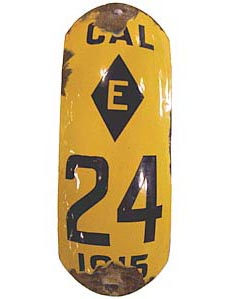 1915 motorcycle DEALER ISSUE-NOT EXEMPT
1915 motorcycle DEALER ISSUE-NOT EXEMPT 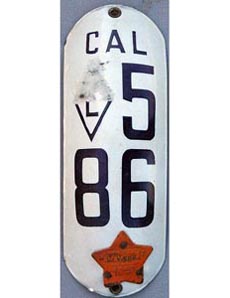 1919 motorcycle issue-Porcelain enamel over concaved steel.
1919 motorcycle issue-Porcelain enamel over concaved steel. 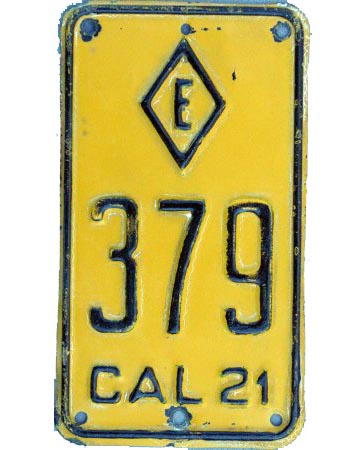 1921 motorcycle issue- Embossed steel.
1921 motorcycle issue- Embossed steel. 
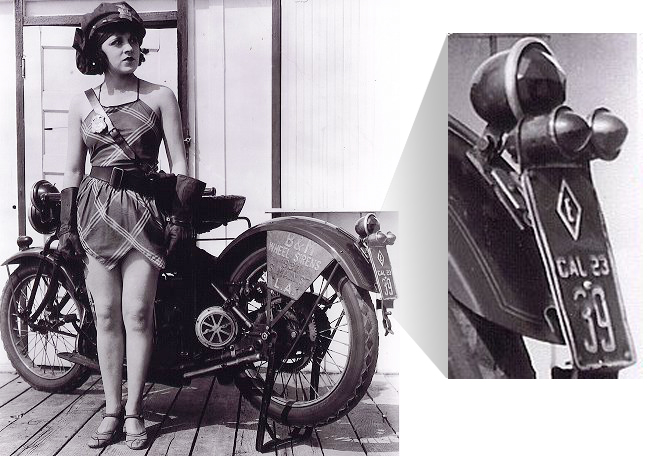
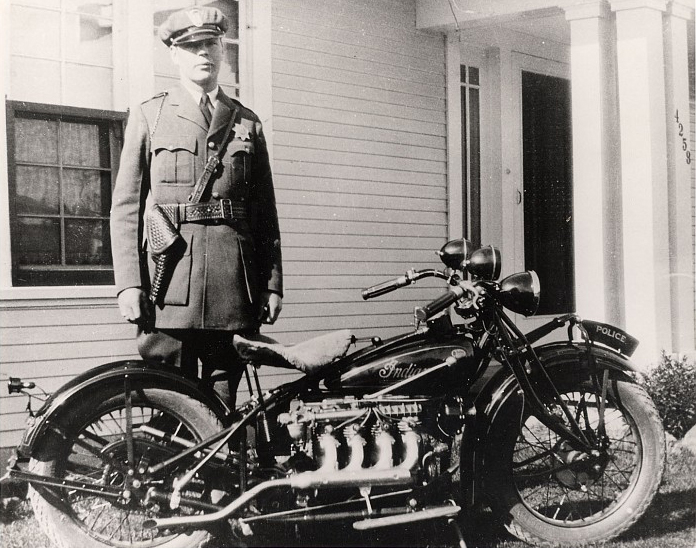
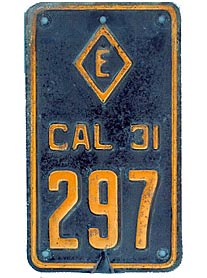 1931 motorcycle issue- Embossed steel. Approx. 4" x 7 1/4". Orange over black.
1931 motorcycle issue- Embossed steel. Approx. 4" x 7 1/4". Orange over black.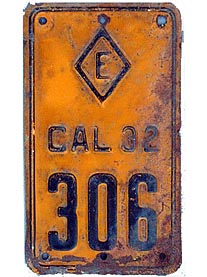 1932 motorcycle issue- Embossed steel. Approx. 4" x 7 1/4". Black over orange.
1932 motorcycle issue- Embossed steel. Approx. 4" x 7 1/4". Black over orange.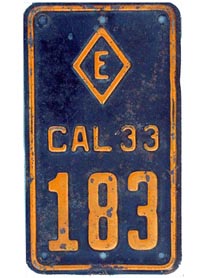 1933 motorcycle issue- Embossed steel. Approx. 4" x 7 1/4". Orange over black.
1933 motorcycle issue- Embossed steel. Approx. 4" x 7 1/4". Orange over black. 
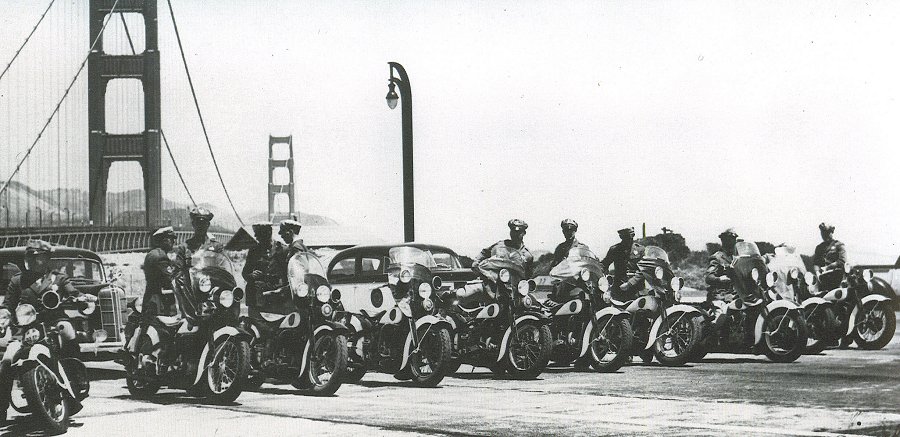
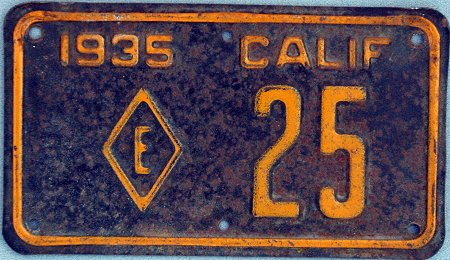 1935 motorcycle issue- Embossed steel.
1935 motorcycle issue- Embossed steel. 
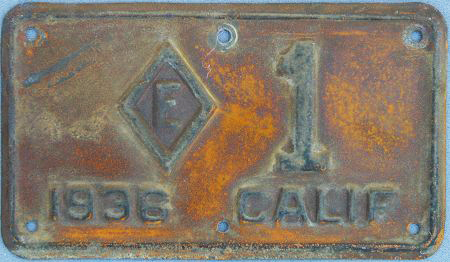 1936 motorcycle issue- Embossed steel.
1936 motorcycle issue- Embossed steel. 
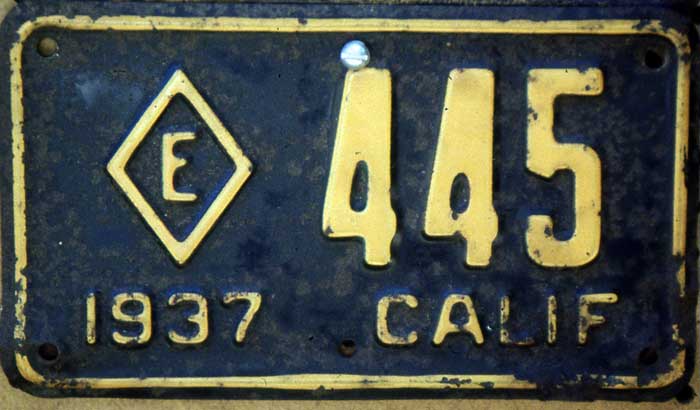 1937 motorcycle issue.- Embossed steel.
1937 motorcycle issue.- Embossed steel.
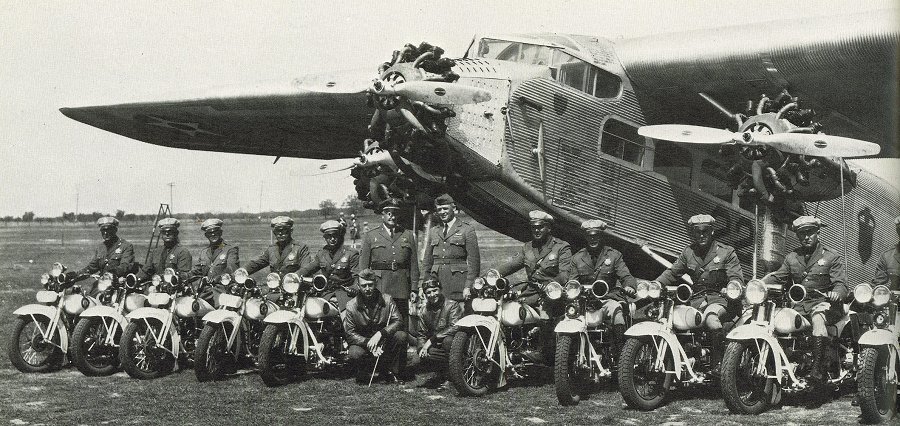

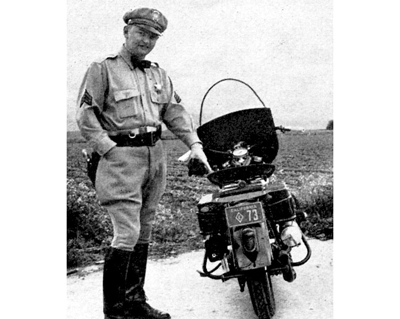
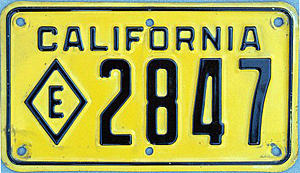 1938-1940 motorcycle issue-
1938-1940 motorcycle issue- 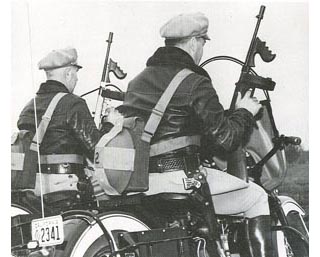
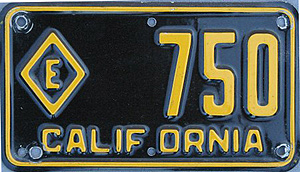 1951-1955 motorcycle issue-
1951-1955 motorcycle issue- 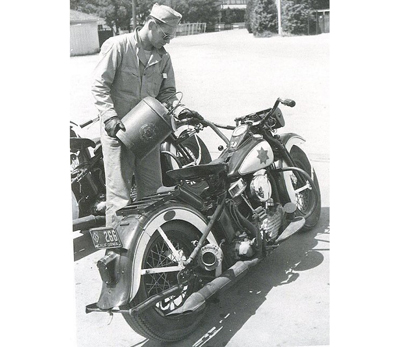
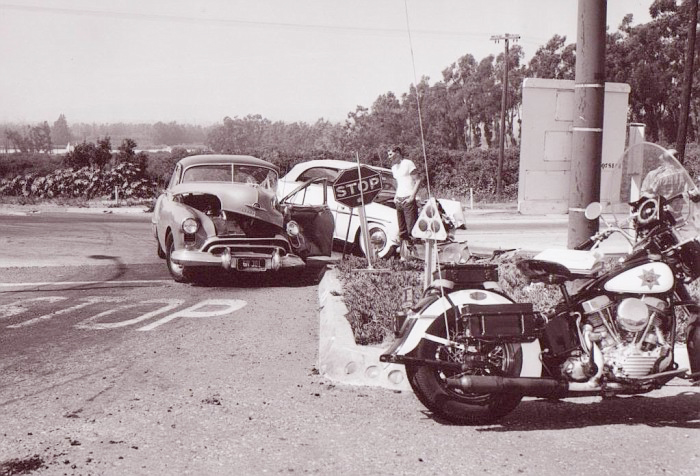
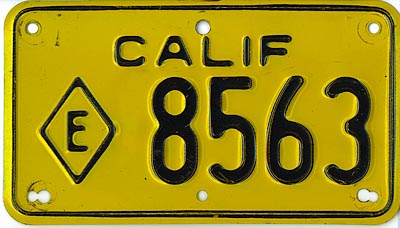 1956-1963 motorcycle issue-
1956-1963 motorcycle issue- 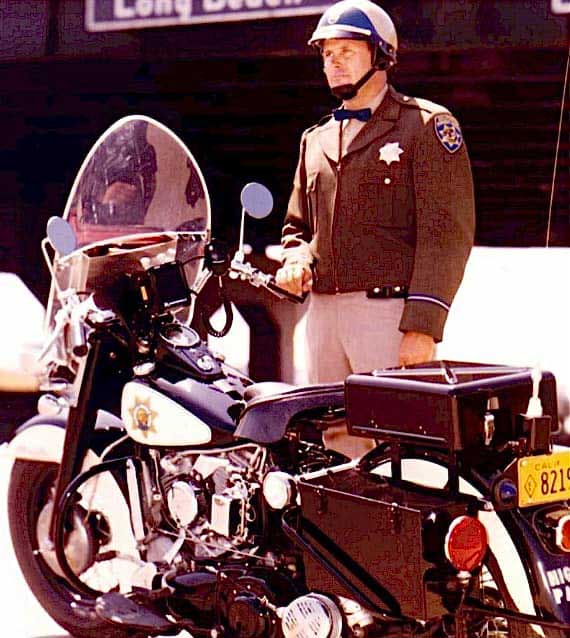 (Courtesy Al Attanasio)
(Courtesy Al Attanasio) 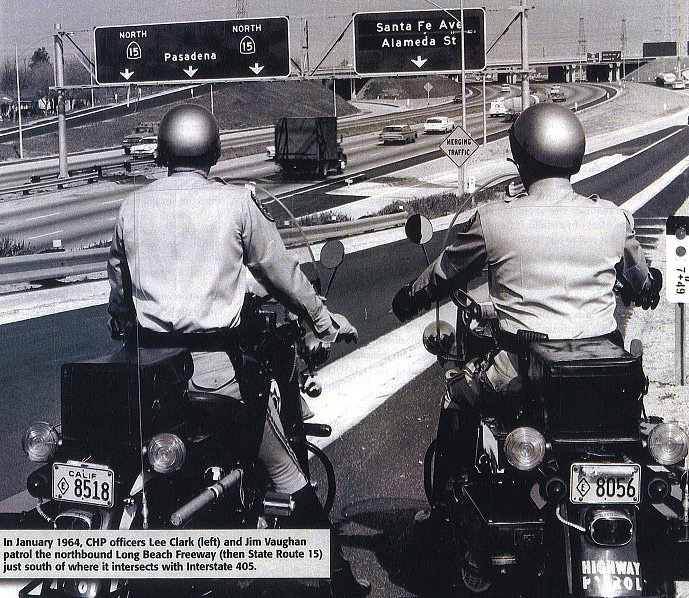
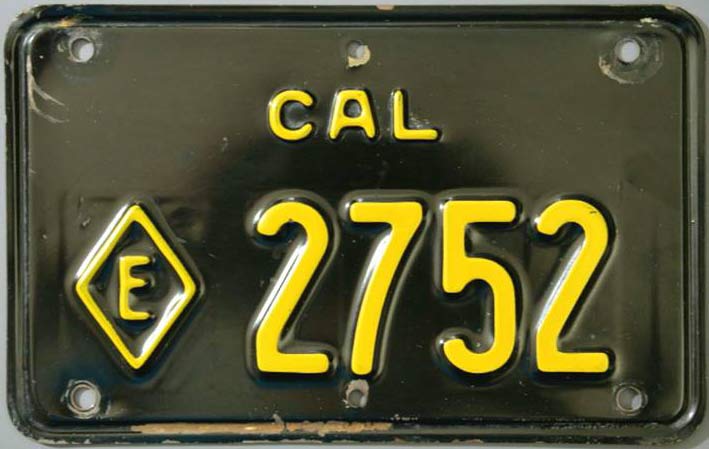 1963-1969 motorcycle issue-
1963-1969 motorcycle issue- 
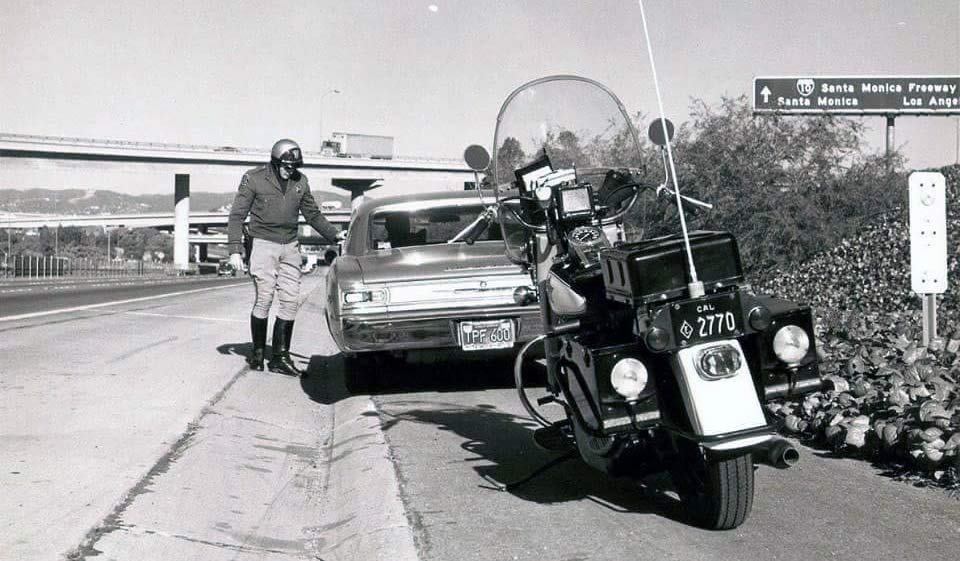
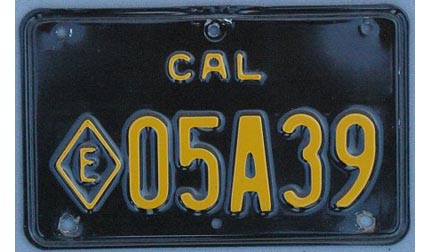 1963-1969 motorcycle issue.
1963-1969 motorcycle issue.
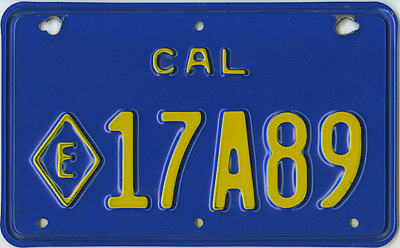 1969-circa 1982 motorcycle issue-Embossed steel.
1969-circa 1982 motorcycle issue-Embossed steel.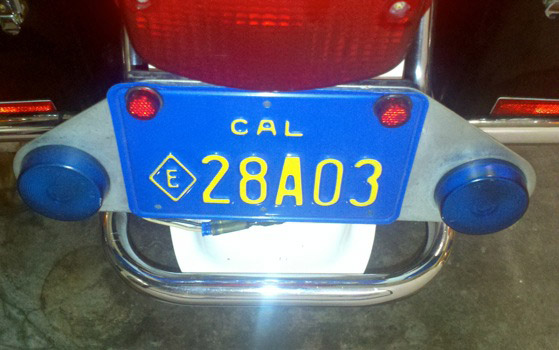 Courtesy Barry Maiten
Courtesy Barry Maiten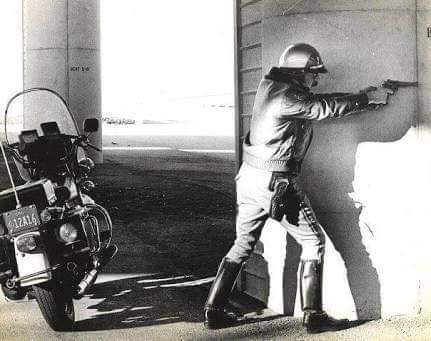
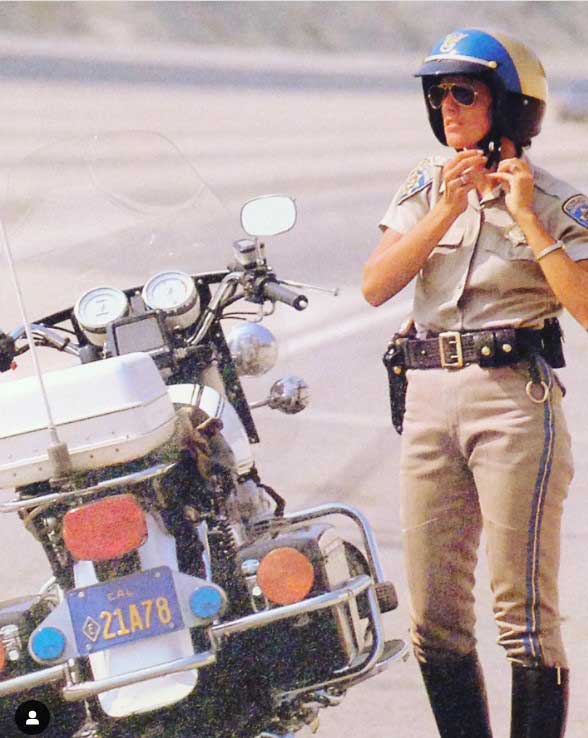 (Courtesy Jim Aitken)
(Courtesy Jim Aitken)
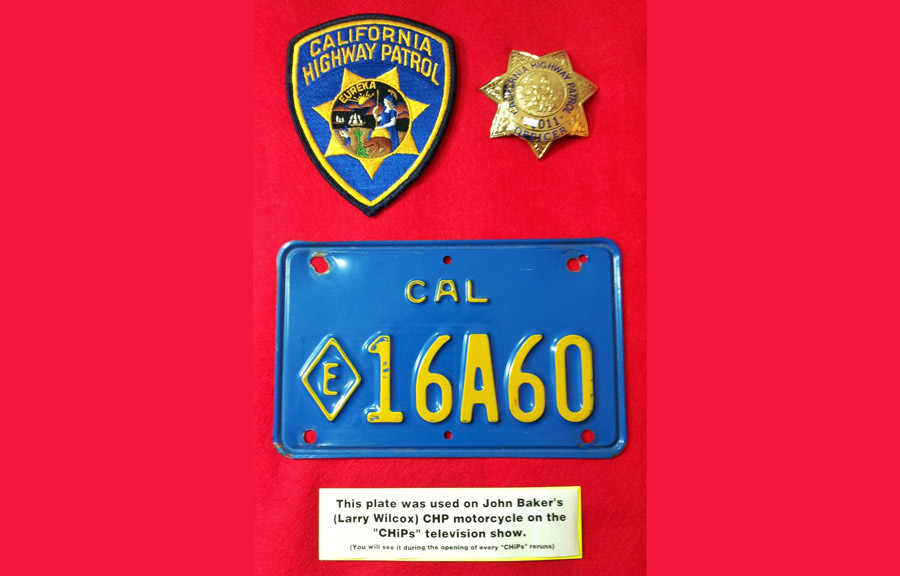 One of the most famed police license plates of all time: The 16A60 California State Exempt motorcycle license plate used on the back of John Baker's (played by Larry Wilcox) CHP motorcycle on the hit 1970's TV show "CHiPs".
One of the most famed police license plates of all time: The 16A60 California State Exempt motorcycle license plate used on the back of John Baker's (played by Larry Wilcox) CHP motorcycle on the hit 1970's TV show "CHiPs". 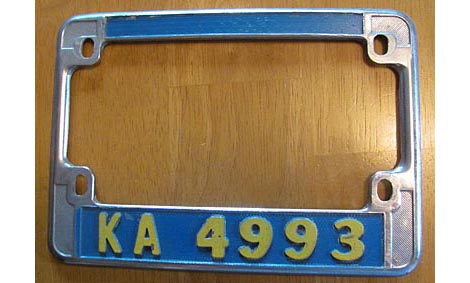 Circa 1980's embossed aluminum license plate bracket bearing radio call number for the California Highway Patrol.
Circa 1980's embossed aluminum license plate bracket bearing radio call number for the California Highway Patrol.
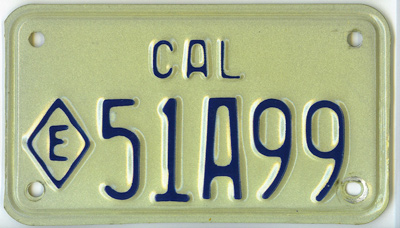 1980's-Current motorcycle issue-Embossed aluminum. Approx. 4" x 7". Blue over reflective white
1980's-Current motorcycle issue-Embossed aluminum. Approx. 4" x 7". Blue over reflective white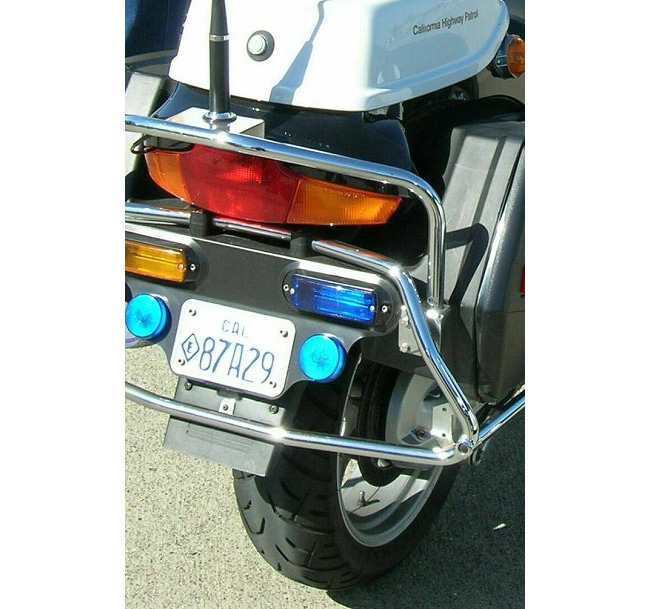
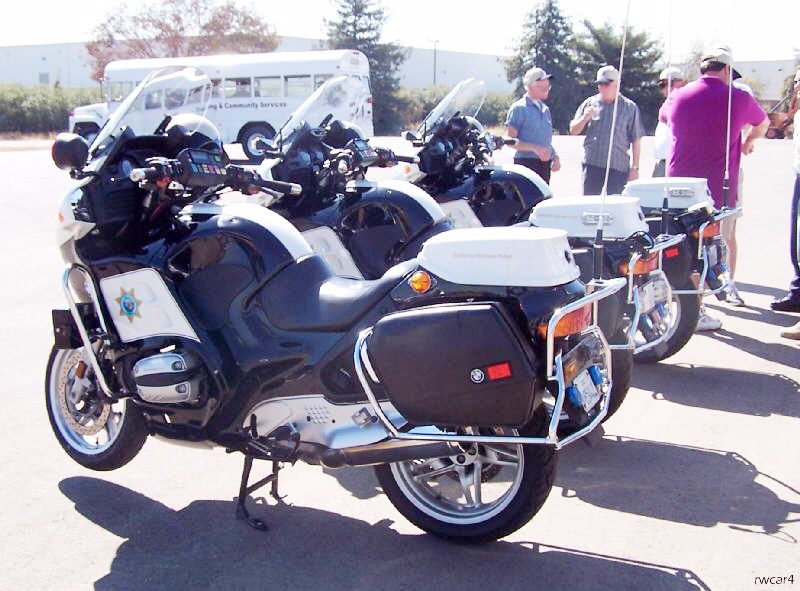
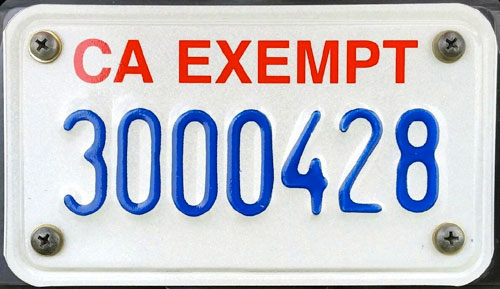 Circa 2009-Current issue. Motorcycle.
Circa 2009-Current issue. Motorcycle.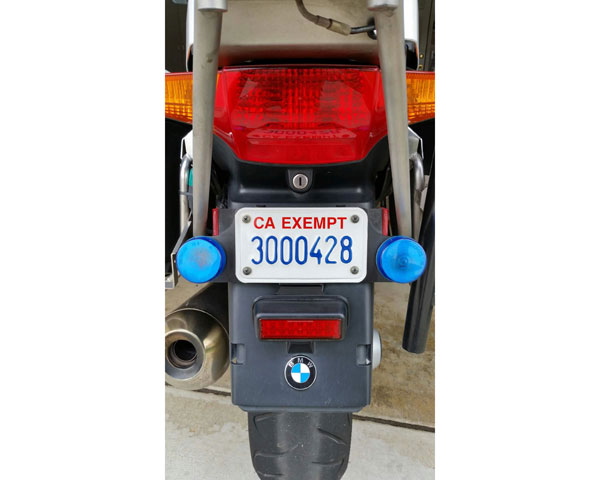
These are a few specialty issues not for sanctioned use on duty.
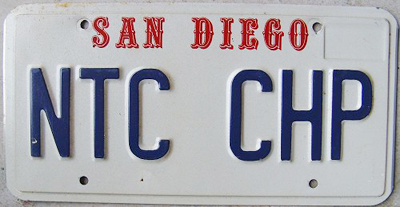 National Troopers Coalition souvenir license plate when the CHP hosted the annual NTC convention in San Diego. Embossed aluminum. Dark blue over reflective white with red.
National Troopers Coalition souvenir license plate when the CHP hosted the annual NTC convention in San Diego. Embossed aluminum. Dark blue over reflective white with red.
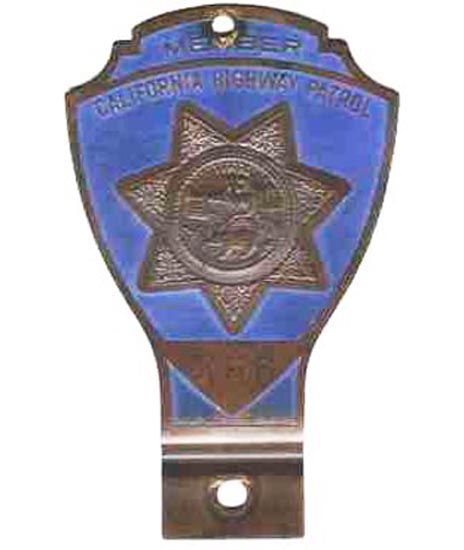 Old CHP "MEMBER" license plate attachment for private vehicle. Looking for clearer image of this type.
Old CHP "MEMBER" license plate attachment for private vehicle. Looking for clearer image of this type.